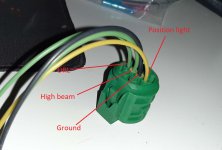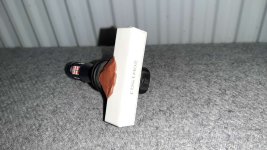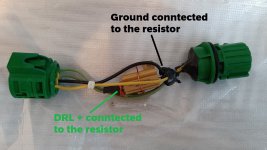- Joined
- Oct 10, 2021
- Messages
- 614
- Points
- 273
Nice scientific approach. I think this will help iwata a lot....
It's a good cure for insomnia if nothing else
Even assuming he doesn't sit down and work through all the formulae and take a GCSE physics exam at the end, it helps to know what you're letting yourself in for though; after all he won't thank the poster of that thread if he cooks his headlight circuit.
To save a bit of reading (is that the definition of TLDR?) effectively if you were to short out the two terminals of a bulb you'd be putting a very low value resistor in parallel to the bulb, and the current may be enough to make something go 'bang'. Same if you use an actual resistor with way too low a value of course, it would create effectively a short circuit. Whereas if it's in serial and you foul it up the lowest resistance will be the value of the resistor + the resistance of the DRL, so worst case would be as if there's no resistor there at all.
Also, as per the formulae, assuming the controller is looking for a voltage drop rather than something else, it's much simpler to calculate the value of a serial resistor to use than a parallel resistor. And the heat generated in the resistor will (or should be) be less because the current will be flowing through both components equally, rather than the majority going through the resistor (serial - current remans constant across the components, parallel - current takes the path of least resistance).
As an aside, you normally use a serial resistor across the terminals to fool the airbag ecu in an airbag delete to emulate the voltage drop across the airbag (as in the elusive little orange plug used when fitting Sabelt seats), though you didn't hear that from me
Last edited:








